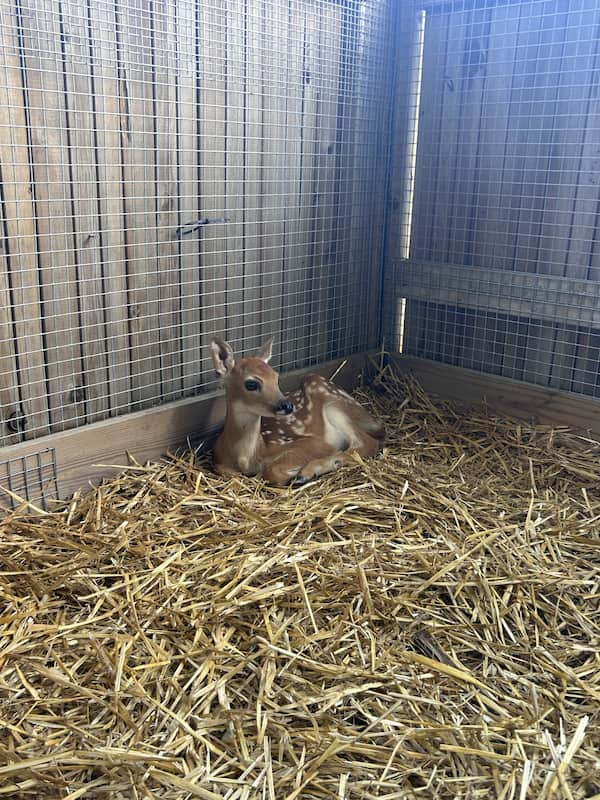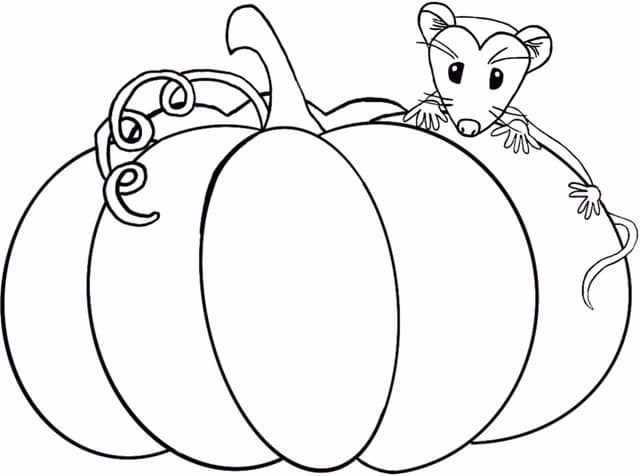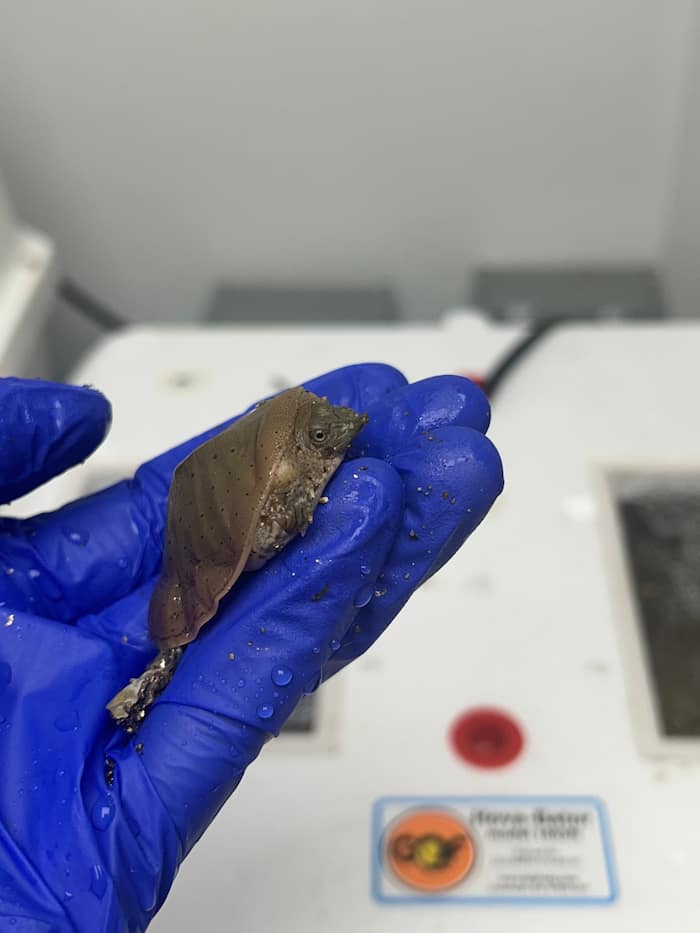White-tailed Deer

In addition to being named the state mammal, the white-tailed deer (Odocoileus virginianus) is the only native deer species present within Illinois and is the largest herbivore species in the state.
As prey species, these animals commonly travel in herds and spend most of their day camouflaging within wooded areas and heavy brush. However, deer are considered browsers and will leave the safety of the woods, heading for open fields where preferable vegetation is available, feeding at dusk and dawn (crepuscular). They can be identified by their tan to gray fur and their notable ‘white tail’ which, when upright, can signal to other deer in the area that danger is near.
Chronic Wasting Disease (CWD)
While the white-tail deer is susceptible to a multitude of illnesses and different types of disease, one disease of particular concern in the state of Illinois is Chronic Wasting Disease (CWD). CWD is a prion disease. A prion is a protein that, when created, was formed incorrectly and leads to the protein acting inappropriately or abnormally. Prions lack any form of DNA and are not considered living organisms like bacteria or parasites, however, when normal functioning proteins encounter prions, the prions manipulate the proteins, causing them to act abnormally, and functionally turning the protein into another prion. Other examples of prion diseases include Mad Cow Disease in cattle and Scrapie in sheep and goats.
Prions can be found both within an organism and within that organisms environment. In many cases, prions can be found in the soil, water, grass and even rocks and can thrive in these environments for years. Prions can also be found in infected fluids from infected individuals including presence in the urine, feces, saliva, and blood. Animals can become infected with this disease either via exposure to prions in their environment or via prions present in animal excretions and fluids.
Symptoms of Chronic Wasting Disease (CWD)
Once an animal has become exposed to the prions, proteins within the body will become infected, ultimately changing their functions and causing physical symptoms in the animal. Symptoms of CWD in deer include dramatic amounts of weight loss (also called wasting), uncoordinated movement, drooling, ‘dazed’ appearance, excessive drinking and urination, droopy ears and decreased fear of humans or other predators. While prions associated with CWD can infect multiples tissues of the body including lymph nodes, spleen and muscle, the neurological symptoms present in cases of CWD are primarily caused by accumulation of prions in the brain and spinal cord.
While infection of CWD can occur at any time, accumulation of prions in the body takes time and therefore, it can take anywhere from 16 months to 4 years before symptoms are appreciated. Additionally, once an animal is infected, they can shed the disease and spread it to other members of their herd, regardless of whether symptoms are present, making it difficult to track and detect the spread of this disease. Currently, there is no vaccine, treatment or cures available to fight CWD and therefore infection of this disease is lethal.
Be informed and help stop the spread of CWD
CWD was first identified in a captive deer population located in Colorado in the 1960’s and since then has spread to thirty-two states, parts of Canada and most recently, Europe. CWD is also able to infect other animals belonging to the cervid family which includes elk, moose, reindeer, and other species of deer such as the red deer, the mule deer, and the black tail deer. While there is no evidence to prove that humans can contract CWD, more research needs to be completed. For hunting, it is recommended that deer carcasses be tested for CWD prior to consumption. If a carcass is found to be infected with CWD, any products from that animal should not be consumed and the state DNR or DWR should be notified. Yearly reporting on CWD in Illinois is available by county through the Illinois DNR website. While diseases such as CWD present in wildlife can be scary, identification of disease and proper reporting are the best ways that you can make a difference in helping to better manage and stop the spread of disease in your area.
Written By: Emma S., Class of 2027
Works Cited
Chronic Wasting Disease Management. (n.d.). Illinois Department of Natural Resources. Retrieved October 17, 2024, from https://dnr.illinois.gov/programs/cwd.html
Chronic Wasting Disease in Animals | CWD. (2024, May 13). CDC. Retrieved October 17, 2024, from https://www.cdc.gov/chronic-wasting/animals/index.html
Escobar, L. E., Pritzkow, S., Winter, S. N., Grear, D. A., Kirchgessner, M. S., Dominguez‐Villegas, E., … & Soto, C. (2020). The ecology of chronic wasting disease in wildlife. Biological Reviews, 95(2), 393-408.
Wagner, K., Pierce, R., Gordon, E., Hay, A., Lessard, A., Telling, G. C., … & Zabel, M. D. (2022). Tissue-specific biochemical differences between chronic wasting disease prions isolated from free-ranging white-tailed deer (Odocoileus virginianus). Journal of Biological Chemistry, 298(4).
White-tailed Deer. (n.d.). Wildlife Illinois. Retrieved October 17, 2024, from https://wildlifeillinois.org/identify-wildlife/white-tailed-deer/
**Images in this article do not depict deer with Chronic Wasting Disease. These are healthy orphaned deer fawn.**




